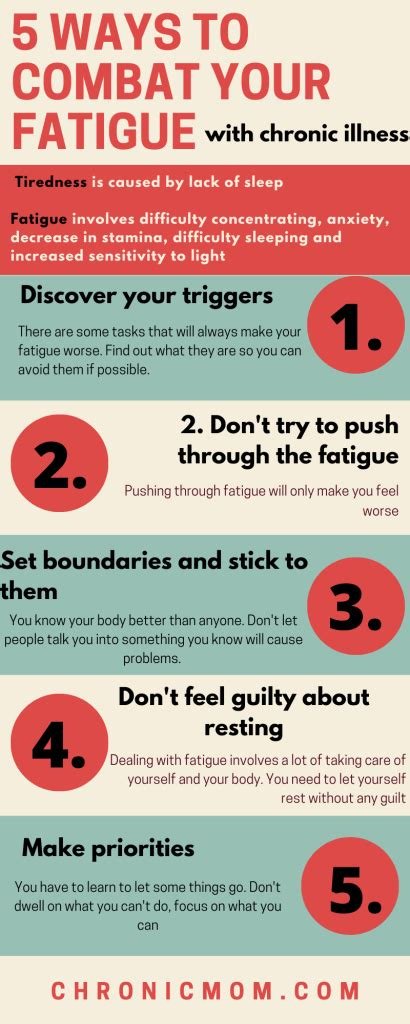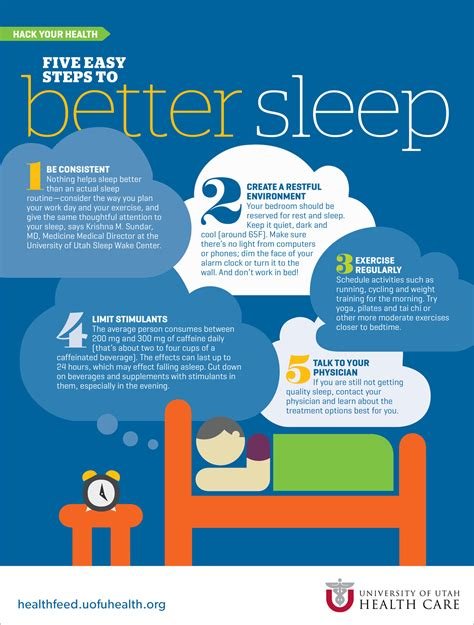The article How to Combat Chronic Fatigue with Smart Lifestyle Changes explores effective strategies for managing chronic fatigue. It begins by outlining the condition and its impact on daily life. Readers are guided on how to identify lifestyle factors that may contribute to their fatigue, emphasizing the importance of awareness in overcoming this challenge. The piece then offers practical tips on incorporating smart habits, such as balanced nutrition, regular exercise, and improved sleep hygiene, to boost energy levels. Monitoring one’s progress is highlighted as a key component of the journey, encouraging individuals to adjust their strategies as needed. Finally, the article concludes with key takeaways and actionable next steps for managing fatigue, ensuring that readers have a roadmap to enhance their well-being. This comprehensive approach provides valuable insights on how to effectively tackle chronic fatigue.
Understanding Chronic Fatigue And Its Impact
Chronic fatigue can profoundly affect an individual’s daily life, hindering their productivity, social interactions, and emotional well-being. Understanding the nuances of chronic fatigue is essential for those experiencing its symptoms and for their loved ones. It’s important to recognize that this condition is more than just feeling tired; it often involves a complex interplay of factors that can vary from person to person. How to effectively manage chronic fatigue entails exploring various lifestyle changes that can help alleviate symptoms.
Key Symptoms of Chronic Fatigue may include the following:
- Persistent tiredness lasting more than six months
- Unrefreshing sleep
- Difficulties with concentration and memory
- Muscle or joint pain without swelling
- Headaches of a new type, pattern, or severity
- Exhaustion following physical activity
- Frequent infections or illness
The impact of chronic fatigue extends beyond physical symptoms; it can lead to emotional distress, social isolation, and a decreased quality of life. Individuals may find themselves avoiding activities they once enjoyed, leading to a cycle of inactivity and worsening fatigue. Addressing these emotional factors is as vital as managing physical symptoms. This holistic approach often helps patients regain a sense of control over their lives and empowers them to make necessary changes.
Adopting a proactive approach to managing chronic fatigue is crucial, and understanding its impact on life is the first step in this journey.
Incorporating smart lifestyle changes can significantly mitigate the effects of chronic fatigue. This may include prioritizing sleep, establishing a balanced diet, engaging in regular physical activity, and considering stress management techniques. With the right strategies, individuals can learn how to better cope with their fatigue and potentially improve their overall well-being. Making these adjustments can lead to a gradual but impactful transformation in one’s energy levels and quality of life.
How To Identify Lifestyle Factors Contributing To Fatigue
Identifying the lifestyle factors contributing to fatigue is essential for managing chronic fatigue effectively. Fatigue can often stem from a combination of habits, routines, and environmental influences that negatively impact your energy levels. By taking a closer look at your daily life and recognizing the detrimental factors, you can begin to make necessary changes that boost your overall well-being and energy.
To facilitate this assessment, here are some practical ways to evaluate your lifestyle effectively. It’s important to be honest with yourself and consider both physical and psychological elements. Make a list that addresses various aspects of your life, focusing on areas that could be contributing to your fatigue levels.
Steps To Assess Your Lifestyle
- Review your daily diet for nutritional imbalance.
- Analyze your sleep quality and quantity.
- Reflect on your physical activity levels throughout the week.
- Assess your stress levels and coping mechanisms.
- Consider your hydration habits and water intake.
- Evaluate your social interactions and support systems.
- Take stock of your screen time and its impact on rest.
By following these steps, you can pinpoint specific areas for improvement. After identifying potential issues, focusing on your dietary influences and sleep patterns will provide significant insights into underlying problems.
Dietary Influences
A poor diet can greatly contribute to feelings of fatigue. Consuming processed foods, high sugar, and low essential nutrients can lead to energy crashes. It’s important to nourish your body with whole foods such as fruits, vegetables, lean proteins, and healthy fats. These foods not only provide necessary vitamins and minerals but also support stable energy levels throughout the day. Consider keeping a food diary to track your dietary habits and evaluate how different foods correlate with your energy levels.
Sleep Patterns
Quality sleep is vital for replenishing energy and combating fatigue. Analyze your sleep routine and environment factors, such as sleep duration, sleep hygiene practices, and bedtime consistency. Developing a relaxing pre-sleep routine can dramatically enhance sleep quality. Establishing a regular sleep schedule helps program your body for better rest, while a calm atmosphere can promote deeper, uninterrupted sleep. Remember, rest is not merely about quantity but also about quality, which plays a crucial role in how energized you feel during the day.
Incorporating Smart Habits To Boost Energy Levels
In your journey on how to overcome chronic fatigue, one essential focus should be on incorporating smart habits into your daily routine. By making small yet significant changes in lifestyle, you can gradually enhance your overall energy levels. These changes not only contribute to physical vitality but also have a profound impact on mental clarity and emotional resilience. Adopting these smart habits is vital to breaking free from the shackles of fatigue.
Effective Strategies to Implement
- Establish a consistent sleep schedule.
- Engage in regular physical activity tailored to your fitness level.
- Prioritize hydration throughout the day.
- Practice stress management techniques, such as meditation or yoga.
- Limit caffeine and sugar intake to stabilize energy levels.
- Incorporate short breaks into your work routine to refresh your mind.
- Set realistic daily goals to maintain motivation.
One of the primary components of increasing energy is establishing an effective exercise routine. Physical activity stimulates the release of endorphins, which can enhance your mood and energy levels significantly. Even if you’re suffering from fatigue, starting with gentle activities such as walking or stretching can make a difference. Aim for at least 30 minutes of movement daily, and gradually incorporate more strenuous exercises like strength training or aerobic workouts as your stamina improves.
Exercise Routines
Exercise doesn’t merely reduce fatigue; it also promotes better sleep quality, which is critical for recovering energy. By discovering a routine that you enjoy—whether that’s dancing, cycling, or swimming—you’ll find it easier to stick with it in the long term. Consider keeping a journal to track your progress, as this can serve as motivation and reinforce the positive effects of regular exercise on your energy levels.
Mindfulness Practices
In addition to physical exercise, implementing mindfulness practices into your daily routine is essential for energy enhancement. Mindfulness reduces stress and anxiety, which are significant fatigue contributors. Techniques such as guided meditation, deep breathing exercises, or mindful walking can help center your thoughts and improve your overall mental well-being. Regular practice can help replenish your energy reserves while fostering a sense of calm and clarity.
Balanced Nutrition
An often-overlooked aspect of maintaining energy levels is balanced nutrition. A diet rich in whole foods—fruits, vegetables, whole grains, lean proteins, and healthy fats—can provide the necessary nutrients your body requires to function optimally. Paying attention to portion sizes and meal timing can also significantly impact your energy throughout the day. Foods loaded with added sugars and refined carbohydrates can lead to energy crashes, making it vital to choose well-balanced meals and snacks.
Monitoring Your Progress And Adjusting Accordingly
Once you have made initial lifestyle changes to combat chronic fatigue, it is essential to monitor your progress and adjust your strategies as necessary. Regularly assessing how your new habits affect your energy levels not only motivates you but also helps identify what works best for your body. This monitoring process can lead to ongoing improvements and can significantly bolster your efforts to reclaim your vitality.
To effectively track your progress, set specific goals related to energy levels, sleep quality, nutrition, and exercise. Keep a diary or use an app to record daily fluctuations in your fatigue levels alongside these lifestyle factors. This data will allow you to see trends over time and help pinpoint what changes are yielding positive results.
Steps to Track Your Improvements
- Establish your baseline energy levels before making changes.
- Set specific, measurable goals for improvement.
- Log your daily energy levels, sleep quality, and activities.
- Review your logs weekly to identify patterns.
- Adjust your lifestyle changes based on observed progress.
- Consult with a healthcare provider if progress stalls.
- Celebrate small victories to keep yourself motivated.
As you analyze your data, remain flexible and be willing to modify your approach. For instance, if you notice that certain dietary changes improve your energy, consider expanding those habits or researching additional foods that offer similar benefits. On the contrary, if a specific exercise routine seems to drain you rather than energize you, it may be time to explore alternative activities that align better with your body’s needs. The journey to overcoming chronic fatigue is uniquely personal, and tailored adjustments will optimize your results.
Key Takeaways And Next Steps For Managing Fatigue
To effectively tackle chronic fatigue, it’s essential to synthesize the knowledge gained from previous sections and prepare actionable steps. Understanding how to implement lifestyle changes and monitoring their effects can significantly alleviate symptoms. It’s crucial to recognize that fatigue management is an ongoing process and may require consistent adjustments to your routine.
One of the vital aspects of managing fatigue is understanding its complexity and recognizing personal triggers. Keep in mind that how to combat chronic fatigue varies from person to person, so it’s important to personalize your approach. As you work through these strategies, taking the time to analyze your progress will help you identify what works best for you.
Actionable Tips to Combat Chronic Fatigue
- Maintain a consistent sleep schedule to improve sleep quality.
- Incorporate daily physical activity, starting with light exercises.
- Stay hydrated and incorporate a balanced diet rich in nutrients.
- Practice relaxation techniques, such as meditation or yoga.
- Limit caffeine and sugar intake to avoid energy crashes.
- Set realistic goals and prioritize tasks to reduce overwhelm.
- Seek social support from friends and family when needed.
By integrating these tips into your daily routine, you’re taking proactive steps towards managing fatigue effectively. Remember to monitor your progress and adjust your strategies as necessary. This tailored approach can empower you to regain your energy and improve your overall quality of life.
Frequently Asked Questions
What is chronic fatigue and how does it affect daily life?
Chronic fatigue is a persistent condition characterized by extreme tiredness that doesn't improve with rest. It can significantly impact daily activities, work performance, and overall quality of life.
What are some common lifestyle factors that contribute to chronic fatigue?
Common lifestyle factors include poor sleep quality, lack of physical activity, unhealthy eating habits, excessive stress, and insufficient hydration.
How can I identify if my fatigue is related to my lifestyle?
To identify lifestyle-related fatigue, reflect on your daily habits, assess your sleep patterns, evaluate your diet, and consider your stress levels. Keeping a journal can help track these factors.
What smart habits can I incorporate to boost my energy levels?
Incorporate habits such as regular exercise, a balanced diet rich in nutrients, proper hydration, consistent sleep schedules, and relaxation techniques like meditation or yoga.
How do I monitor my progress in combating chronic fatigue?
Monitor your progress by keeping a daily log of your energy levels, dietary intake, sleep quality, and physical activity. This will help you identify patterns and make necessary adjustments.
What adjustments might I need to make if I don't see an improvement in my energy levels?
If you don't see improvements, consider reassessing your habits, consult a healthcare professional for further evaluation, and be open to experimenting with different techniques or lifestyle changes.
Are there any other health conditions that may cause chronic fatigue?
Yes, chronic fatigue can be a symptom of underlying health conditions such as sleep disorders, thyroid issues, depression, or chronic illnesses like fibromyalgia. Consulting a doctor for a thorough evaluation is advisable.
What are some key takeaways for managing chronic fatigue effectively?
Key takeaways include recognizing the importance of a balanced lifestyle, prioritizing sleep, engaging in regular physical activity, managing stress effectively, and consistently monitoring your health to make necessary changes.









